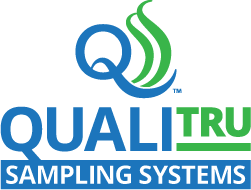Milk Processor Application Sites


1. Milk tanker truck sampling
Install a QualiTru Sanitary Recessed Port with Security Lid to pull an official Pasteurized Milk Ordinance (PMO) Appendix N (antibiotic) sample prior to entering the receiving bay. Side port sampling eliminates the need to climb to the top of the tanker truck, assuring a safer physical sampling environment, and improving operation efficiencies.
2. Receiving bay sampling
Install a beveled seat Qualitru TruStream Sanitary Port at the outlet valve on a tanker truck. A representative milk sample can be collected via a peristaltic pump and sterile collection unit as the tanker truck is being unloaded in the receiving bay, improving operation efficiencies and reducing receiving bay congestion.
3. Raw product sampling
Install a QualiTru TruStream Sanitary Recessed Port in the raw receiving silo to collect a representative sample for regulatory or milk quality samples.
4. System diagnostic
Install a QualiTru TruStream Sanitary Port at any location throughout your fluid path as part of the diagnostic function, system quality check, Clean in Place (CIP) cleanliness check and overall milk quality samples.
5. Post-pasteurization monitoring
Install a QualiTru TruStream Sanitary Port on the backside of the pasteurizer to monitor post-pasteurization contamination and to verify pasteurization effectiveness and efficiency. This application can also be part of the diagnostic function, system quality check, CIP cleanliness check and overall milk quality samples.
6. Collection tank for pasteurized products
Install a QualiTru TruStream Sanitary Tank Port or Recessed Port on the exterior of the pasteurized tank or silo to collect samples for regulatory requirements or quality systems.
7. Filling system
Install a QualiTru TruStream Sanitary Port just before the filler to collect samples for regulatory requirements or quality systems. Samples can also be used to verify the sterility of the product just prior to packaging and to verify the lack of contaminants system-wide.


